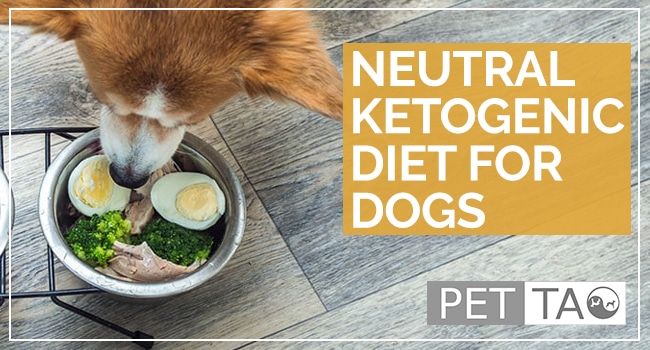How to Make an Energetically Balanced Ketogenic Diet for Dogs
In this article, we’re going to show you how to make an energetically balanced ketogenic diet for dogs.
If you’re not sure which type of energetic diet your dog needs, please take a look at our feeding recommendations chart. You can find the other recipes listed on our recipe page.
Feeding your dog the right diet is foundational and helps everything else you do for your dog’s health work better.
Why Feed a Ketogenic Diet for Dogs?
There are several different reasons you might want to feed a ketogenic diet for dogs.
You might choose a ketogenic diet because you feel feeding a ketogenic dog food mimics the “primal diet” ancient dogs ate long ago.
Therefore, you feel feeding a “primal diet” will keep your dog healthier.
On the other hand, you might choose a ketogenic diet to help certain health conditions like diabetes, seizures, or cancer.
What Makes a Diet Ketogenic?
Explained simply, a ketogenic diet is a very low-carb, high fat, and moderate protein diet.
And, eating a ketogenic diet forces your dog’s body to burn fat for fuel instead of carbohydrates.
A ketogenic diet contains:
- 47%-57% fat
- 28% -38% protein – mostly from meat
- A maximum of 15% carbohydrates
Our vets feel feeding dogs an energetically appropriate diet is best, even when you choose to feed in ketogenic ratios.The information below is for dogs who need a neutral or energetically balanced diet.
Does Your Dog Need a Neutral or Balanced Diet?
A neutral diet benefits young, healthy dogs who:
- Are active and play
- Breathe without problems
- Have a normal appetite
- Sleep comfortably
- Pay attention
- Live in a mild climate
If the characteristics above sound like your dog, he/she will benefit from a neutral or balanced diet.
If not, please take a look at our feeding recommendations chart to find which diet is energetically best for your dog.
The Neutral Ketogenic Dog Food Recipe
Below is the recipe for a neutral ketogenic diet for dogs. It’s pretty easy to make in a slow cooker!
Just use the lists of foods below to make sure you’re using all neutral ingredients.
Then, simply mix and match the below ingredients as needed and create food your dog loves!
Of course, you need to make sure the recipe fits the protein, fat, and carbohydrate ratios listed above.
We recommend using an online food log to easily track the exact protein, carbohydrate, and fat ratios of the new recipes you come up with.
You can find online food logs on websites like Fitbit and Livestrong.
Neutral Food Lists
The ingredients listed below are all neutral.
We also recommend using coconut oil as the fat choice, as coconut oil naturally contains 45% – 65% MCTs, which is beneficial for all dogs.
MCT is especially helpful for dogs suffering from seizures because it helps prevent seizures.
You can further increase your dog’s MCT intake by purchasing a canine MCT supplement and following the label instructions.
Meats/Protein Source
- Beef, beef liver
- Pork (liver, kidneys)
- Quail
- Pigeon
- Chicken eggs
- Fish (salmon, tuna, mackerel, carp, sardines)
- Milk
- Wild rabbit
- Tripe
Vegetables
- Beetroot
- Broccoli
- Carrot
- Cabbage
- Chinese cabbage
- Apple
- Cauliflower
- Asparagus
- String beans
- Green beans
- Green peas
Fats
- Olive oil
- Black sesame oil
Sample Recipe
To make the recipe at home, you will need:
- 5 pounds of meat (see “protein” list above)
- 1.5 pounds of vegetables (see “vegetable” list above)
- 1 egg
- 4 tablespoons of olive oil
Directions:
First, debone and chop meat and vegetables.
Next, place all ingredients in crockpot layering:
- Slow cooking root vegetables on the bottom
- Meat in the middle
- Fast cooking items on top
Then, top with 1 cup of water.
Afterward, cook on low for 4 hours.
In addition, add the following to your pet’s diet:
- One canine multivitamin per day
- Calcium supplement 50mg/kg of body weight (22mg/lb of body weight) per day. Some other good choices for calcium are eggshell powder or bone meal.
Feeding Schedule:
Make sure to give your dog a canine multivitamin while on this plan!
Feeding Schedule:
- Feed roughly 1.5 cups per 25 pounds of body weight twice daily.
- Monitor your pet’s weight. If an undesirable weight loss occurs, please contact your veterinarian immediately so that you can make an adjustment in the feeding/diet plan.
Sources:
- Use TCVM Food Therapy to Energetically Balance Your Pet https://pettao.com/pet-food-recipes
- Dietary intervention for canine epilepsy: Two case reports: Dietary Intervention for Canine Epilepsy: Two Case Report https://www.ncbi.nlm.nih.gov/pmc/articles/PMC6398089/
- Veterinary Practice News https://www.veterinarypracticenews.com/ketogenic-diet-zonisamide-ease-seizures/








